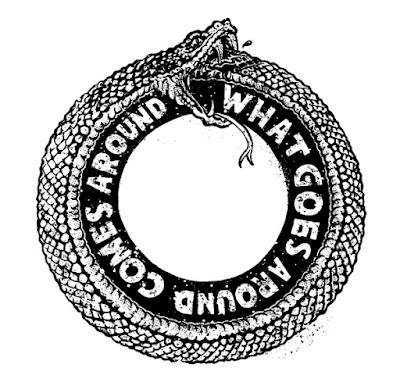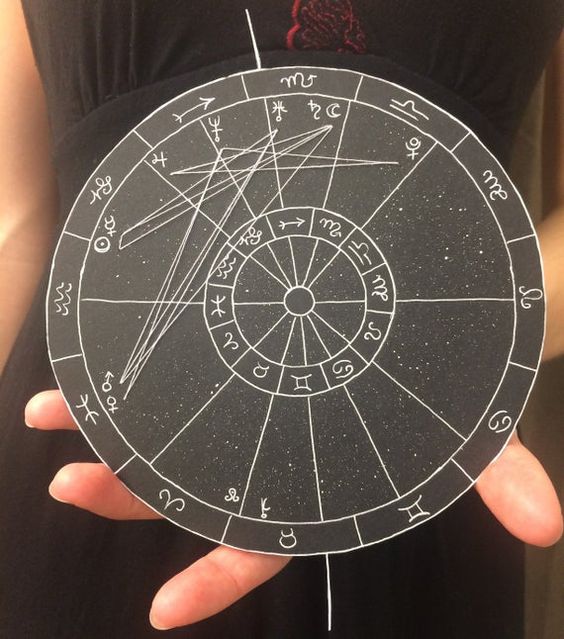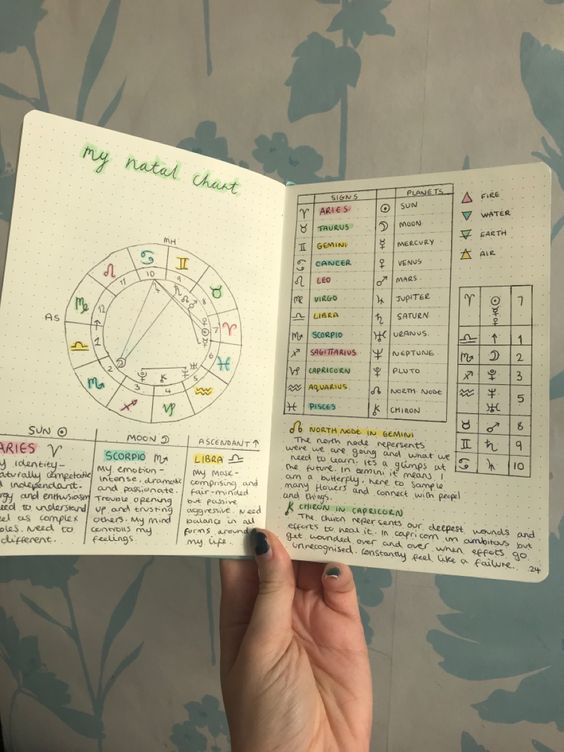
Karmic Astrology
 Question: What planets and aspects have to do with karma?
Question: What planets and aspects have to do with karma?
Jupiter and Saturn, as celestial bodies in astrology, hold profound significance when it comes to understanding the dynamics of karma and the ebb and flow of life experiences. These two planets, often referred to as the “great banks of credit and debit” in the horoscope, play distinct roles in shaping our journey through life and our perception of karmic forces. Jupiter, the giant gas giant in our solar system, is often associated with expansion, growth, and blessings. When we experience Jupiter transits in our astrological chart, it can feel as though we are being showered with rewards and gifts from the heavens. This period may bring a sense of abundance, prosperity, and spiritual growth. It’s not limited to material wealth; some individuals may receive profound spiritual insights or embark on a journey of self-discovery that expands their world in profound ways. Jupiter embodies the eternal light, representing boundless opportunities and a higher state of consciousness.
On the other hand, Saturn, the majestic ringed planet, represents structure, responsibility, and discipline. During Saturn transits, we often encounter challenges, limitations, and a sense of being tested by life’s circumstances. It can feel like a period of punishment, humiliation, or even loneliness. Saturn’s energy compels us to confront our responsibilities and face the consequences of our actions. However, despite the hardships, Saturn’s lessons are deeply transformative and may offer more enduring rewards over the long term. It teaches us patience, resilience, and the importance of hard work. Saturn’s influence is often seen as a necessary cycle, taking us into the depths of our own existence and teaching us valuable life lessons.
Jupiter and Saturn can be viewed as cosmic judges, representing moral consciousness and social duties. They symbolize justice in different ways, with Jupiter emphasizing a more expansive and benevolent form of justice, while Saturn enforces a stricter and more disciplined sense of justice. Together, they represent the balance between spirit and matter, wisdom, and religious teachings.
In essence, the interplay of Jupiter and Saturn in our astrological charts mirrors the duality of life itself. We experience moments of abundance and spiritual growth, guided by Jupiter’s light, and periods of challenge and growth through Saturn’s disciplined teachings. Both planets have their unique gifts to offer, and understanding their roles in our lives can help us navigate the complexities of karma and the ever-changing interplay of light and shade on our life’s journey.
Saturn and Karmic Destiny
Saturn is considered exalted in the sign of Libra in traditional astrology. This astrological placement holds deep symbolism and significance in the context of karma and the theme of equilibrium. Libra, represented by the scales, is associated with balance, fairness, and harmony. It is the sign that seeks to establish equilibrium in all aspects of life, whether in relationships, justice, or aesthetics. When Saturn is in Libra, it finds itself in a position where its energies align harmoniously with the qualities of the sign. Individuals with Saturn in Libra in their birth chart may have a profound sense of duty when it comes to ensuring fairness and justice in their own lives and in the world around them. They may feel a strong conscientious pull toward resolving conflicts, promoting cooperation, and making decisions that are guided by a deep sense of ethics and moral responsibility.
The only decree of karma, an eternal and immutable decree, is absolute Harmony in the world of matter as in the world of spirit. It is not, therefore, Karma that rewards or punishes but it is we who reward and punish ourselves, according as we work with and through Nature, abiding by the laws on which that harmony depends, or breaking them.
The characterization of Jupiter and Saturn as cosmic deities, one representing all that is good and the other all that is bad, is a simplified and somewhat archaic view of these planets in astrology. While such symbolism has historical roots, modern astrology takes a more nuanced and balanced approach to understanding the energies and influences of these celestial bodies. Jupiter is often associated with expansion, growth, and benevolence. It is seen as a planet that brings blessings, opportunities, and a sense of abundance. In some cultural and religious contexts, it has been likened to benevolent deities or gods due to its association with positivity and good fortune. However, it’s important to note that Jupiter’s influence also extends to areas like excess, overindulgence, and a lack of restraint. It is not inherently “all good,” but rather a planet that amplifies whatever it touches in an individual’s life.
Saturn, on the other hand, is traditionally associated with restriction, discipline, and challenges. It is often seen as a planet that tests us, teaches us valuable life lessons, and compels us to face our responsibilities. The comparison to Satan may stem from its association with hardships and limitations. However, it’s essential to recognize that Saturn’s influence is not solely negative. While it can bring difficulties, it also offers opportunities for personal growth, maturity, and the development of strength and resilience.
Astrologer Raphael’s characterization of Saturn as “the most formidable, malefic, and austere of all the celestial bodies” mirrors a historical viewpoint that tends to accentuate Saturn’s more demanding qualities. But modern astrology, as exemplified by Liz Greene’s portrayal of Saturn, provides a more balanced view. Saturn is often seen as the archetype of the “Teacher” or the “Beast” that, when confronted and understood, can lead to profound transformation and personal development. Saturn’s beauty, both in its celestial appearance and its symbolic depth, lies in its ability to guide us through the shadows and into the light of self-awareness and wisdom. It represents the lessons we must learn and the challenges we must face to become stronger, wiser, and more responsible individuals.
In modern astrology, both Jupiter and Saturn are recognized as complex and multifaceted planets, each with its own set of qualities and influences that go beyond simplistic notions of good and evil. They are part of the greater forces that shapes our lives and experiences, offering us opportunities for growth, balance, and self-discovery.
Karmic Astrology
Karmic astrology is a vast and intriguing field within astrology that delves into the idea that our current life experiences, challenges, and relationships may be influenced by our past lives. Howard Sasportas, a respected astrologer, was known for his work in this area and advocated for approaching the birth chart from a karmic and past life perspective. Sasportas’s perspective highlights the belief that the birth chart not only reflects an individual’s current life journey but also provides insights into the deeper, underlying roots of that journey. These roots, according to karmic astrology, can extend back to previous lifetimes. Here are some key points to consider when approaching astrology from a karmic perspective:
Karmic astrology suggests that the challenges, talents, and relationship patterns we encounter in our present life may have their origins in choices and experiences from past lives. The birth chart is seen as a map that can reveal these karmic influences. Astrologers practicing karmic astrology often look for recurring patterns or themes in a person’s chart that may indicate karmic lessons or unresolved issues from previous incarnations. These patterns can manifest in various areas of life, including relationships, career, and personal growth. Analyzing the placement of these nodes in the birth chart can offer insights into one’s karmic journey. The South Node is associated with past life experiences and tendencies, while the North Node represents the lessons and growth areas for the current life. Analyzing the placement of these nodes in the birth chart can offer insights into one’s karmic journey. Karmic astrology aligns with the idea of reincarnation, where the soul goes through a series of lifetimes to learn and evolve. Each life is seen as an opportunity for the soul to work through unresolved issues and develop spiritually. Understanding one’s karmic influences can provide a path to healing and integration. By recognizing and addressing past life patterns, individuals can work towards resolving karmic challenges and evolving on a soul level.
Traditional interpretations of karma suggest that one’s current experiences are influenced by their actions and choices from past lives. This implies that both positive and negative experiences are the result of one’s own past deeds. However, life is often more complex than a simple one-to-one correlation between actions and consequences. Good people can suffer, and those who engage in negative actions may appear to prosper. Karma can also be seen at a collective level, where groups, communities, or even entire nations may experience the consequences of their collective actions and choices. The concept of family karma suggests that individuals may inherit karmic patterns and challenges from their ancestors or family lineage. This idea aligns with the notion that certain family dynamics and patterns repeat from generation to generation until they are resolved or balanced.
The idea of karma often raises questions about the nature of justice and fairness. Life experiences, from a human perspective, can seem deeply unfair at times. The complexities of karma challenge us to contemplate whether there is a higher justice at play that goes beyond our immediate understanding. Some interpretations of karma focus less on the idea of reward and punishment and more on the idea of learning and soul growth. From this perspective, all experiences, whether positive or negative, are opportunities for spiritual development and self-realization. Regardless of the intricacies of karma, many spiritual traditions emphasize the importance of ethical living and taking responsibility for one’s actions. The idea is that by making conscious and virtuous choices, individuals can create positive karma for their future.
Nodal Axis

Different astrologers hold varying beliefs and interpretations regarding how karma is represented in the chart and how it influences an individual’s life journey. Here, we explore two contrasting perspectives on the role of karma in astrology. Some astrologers focus on specific chart elements, such as the nodal axis (North Node and South Node), when exploring the theme of karma. The nodal axis is often associated with the soul’s evolutionary journey and lessons from past lives. Astrologers who take this approach may believe that certain aspects of the chart are particularly indicative of karmic influences. For example, the North Node may represent the direction in which the soul is evolving, while the South Node could indicate unresolved karmic patterns. They may be cautious about making broad statements regarding the entire chart being karmic and prefer to emphasize specific karmic indicators.
Other astrologers, like Dane Rudhyar, take a more holistic view, considering the entire birth chart as a reflection of an individual’s karma. They see every aspect, planet, node, and house as interconnected and representative of the person’s life journey and past influences. According to this perspective, the family and environment in which an individual is born are also seen as part of their karmic context. The focus is on the idea that the entire birth chart symbolizes the condensed karma of the individual and that the potential for transformation and spiritual growth is present throughout the chart.
Rudhyar’s perspective underscores the idea that the birth chart is a comprehensive map of an individual’s life path, reflecting both their karmic influences and the potential for evolution and personal growth. The concept of repolarizing and transmuting karma into dharma, as mentioned by Rudhyar, suggests that individuals have the capacity to consciously work with their astrological influences and transform their destiny.
In the end, the interpretation of karma in astrology remains a matter of personal belief and astrological philosophy. Some astrologers may choose to focus on specific karmic indicators within the chart, while others embrace a broader view, seeing the entire birth chart as a representation of an individual’s karmic journey and potential for spiritual development. Each perspective offers valuable insights into the intricate relationship between astrology and the concept of karma.
Pluto’s Evolutionary Journey
The field of evolutionary astrology, which explores the soul’s journey and its evolution through lifetimes, raises a variety of perspectives and ethical considerations. Glen Perry’s “A Critical Review of Reincarnational Astrology” highlights some of the complexities and concerns associated with the practice of reincarnational or karmic astrology. Some astrologers place particular emphasis on Pluto when examining the soul’s evolutionary journey. Pluto’s transformative and deep-reaching influence is seen as symbolic of the soul’s desires and its evolutionary path. It is often associated with profound soul growth and change. The lunar nodes (North Node and South Node) are frequently explored in the context of past lives and the soul’s journey. The North Node is considered a point of growth and evolution, while the South Node represents past life patterns and experiences that need to be transcended.
One of the central ethical concerns in evolutionary astrology is the potential for deterministic thinking. If an astrologer asserts that an individual’s life path is entirely determined by past life karma or astrological influences, it can raise questions about personal agency and free will. Many ethical astrologers strive to strike a balance between acknowledging past influences and empowering individuals to make conscious choices in their lives. The goal is to provide insights that foster self-awareness and personal growth without promoting fatalistic attitudes.





















 Sun Square Pluto Synastry: You’ve Got That Power Over Me
Sun Square Pluto Synastry: You’ve Got That Power Over Me
 Scorpio’s Cold Withdrawal
Scorpio’s Cold Withdrawal
 Moon Conjunct Pluto Synastry
Moon Conjunct Pluto Synastry
 Venus-Pluto Synastry: A Love So Powerful That It Might Just Kill Them
Venus-Pluto Synastry: A Love So Powerful That It Might Just Kill Them
 Mars Square Pluto Natal Aspect: The Unbreakable Spirit
Mars Square Pluto Natal Aspect: The Unbreakable Spirit
 Mercury Conjunct Venus Synastry
Mercury Conjunct Venus Synastry
 Reflections on a Past Venus-Pluto Synastry Aspect
Reflections on a Past Venus-Pluto Synastry Aspect
 Mars-Pluto Synastry: Something Quite Dark and Dangerous
Mars-Pluto Synastry: Something Quite Dark and Dangerous
 Uranus Transits 8th the House: Rebirth from Chaos
Uranus Transits 8th the House: Rebirth from Chaos
 Mars-Saturn Synastry: The Eternal Loop
Mars-Saturn Synastry: The Eternal Loop
 Venus Trine Mars Synastry
Venus Trine Mars Synastry
 Mars in Aquarius: Sex drive
Mars in Aquarius: Sex drive
 Composite Sun in the 8th House: Weather the Storm
Composite Sun in the 8th House: Weather the Storm
 Venus Trine Pluto: Dark Desires
Venus Trine Pluto: Dark Desires
 Sun Conjunct Pluto Synastry: Enlightening or Annihilating
Sun Conjunct Pluto Synastry: Enlightening or Annihilating
 Mars Conjunct Pluto Synastry
Mars Conjunct Pluto Synastry
 Moon Opposite Uranus Natal Aspect
Moon Opposite Uranus Natal Aspect
 The Watery Gardeners: Cancer, Scorpio, and Pisces
The Watery Gardeners: Cancer, Scorpio, and Pisces
 Transiting Pluto Aspect Natal Mars: Are You Mad as Hell
Transiting Pluto Aspect Natal Mars: Are You Mad as Hell
 Moon Conjunct Pluto Natal Aspect: Emotional X-Ray Vision – Seeing Through Souls Since Birth
Moon Conjunct Pluto Natal Aspect: Emotional X-Ray Vision – Seeing Through Souls Since Birth